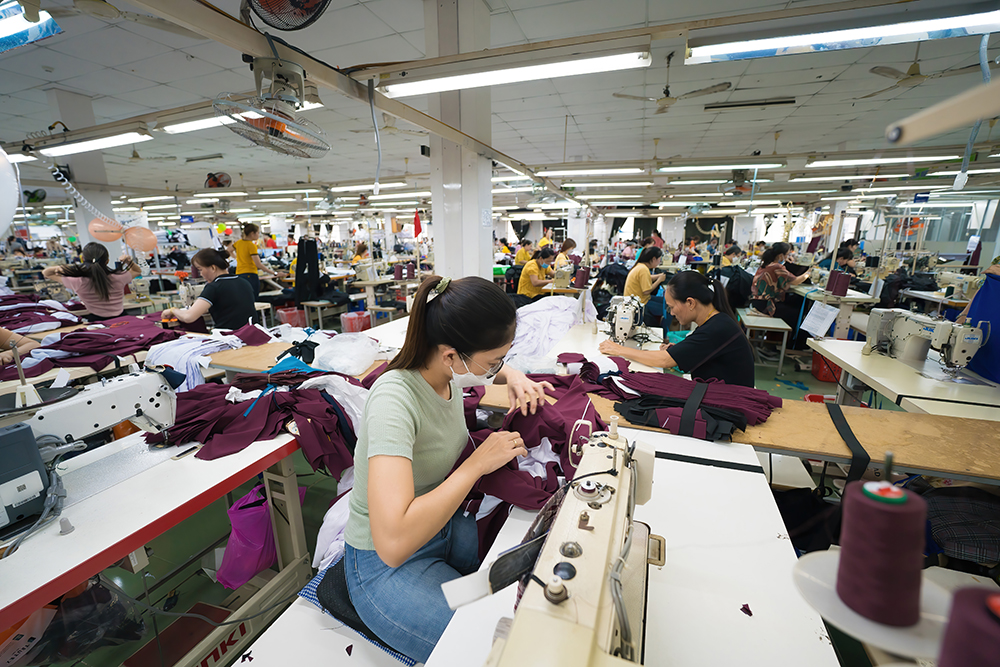Asia has rightfully earned the title of the “garment factory of the world,” employing approximately 75% of the global garment sector workforce. With a staggering 42 million women working in this industry, it serves as a crucial gateway for women to enter the formal workforce and gain economic empowerment. However, despite their significant presence, women in Asian garment supply chains continue to face persistent gender gaps in various aspects of their working lives.
Closing the Gender Gap in the Garment Industry: A Path to Inclusive Growth
By addressing these gaps and implementing fairer policies, the Asian garment industry has the potential to lift millions of women out of poverty and drive inclusive economic growth. Here are five key strategies to achieve equality and fulfill the Sustainable Development Goals (SDGs), particularly Goal 5 and Goal 8:
1. Creating Safe Spaces: Eliminating Gender-Related Risks
Ensuring a workplace free from harassment, violence, and discrimination is paramount. Establishing grievance redressal mechanisms encourages the reporting of gender-related risks, such as bullying, sexual abuse, and harassment. Confidential and efficient resolution of complaints empowers women and enhances their sense of security. Transparency and unbiased handling of these issues are crucial for the mechanism’s success. Additionally, gender sensitization and capacity-building training can empower women to know their legal rights and challenge biases and prejudices, fostering a more inclusive and respectful work environment.
2. Social Protection: A Safety Net for Women
Social protection programs and policies are powerful tools to reduce inequality and poverty gaps. The COVID-19 pandemic highlighted the disproportionate impact on women in the garment industry, exacerbated by their underrepresentation in leadership roles and unequal access to financial services. Well-designed labour market policies, including social insurance programs, can cushion the risks of unemployment, address the burden of childcare, and provide support during health crises, natural disasters, or pandemics. Pakistan’s Benazir Income Support Programme (BISP) is a successful example, providing regular cash transfers or in-kind services to vulnerable individuals, reducing food insecurity, and improving access to education and health services.
3. Equal Pay for Equal Work: Stitching Fairness into Wages
Addressing gender wage inequality, which is particularly acute in Pakistan and India, is essential. Ensuring equal pay for work of equal value boosts businesses’ reputations and attracts talent. Establishing pay equity committees with significant female representation and direct knowledge of the work can help eliminate gender bias in the wage-setting process.
4. Empowering Women in a Transforming World of Work
With the rise of artificial intelligence, automation, and robotics, the future of work is undergoing unprecedented change. Businesses and governments must commit to measures addressing the challenges posed by this transformation, especially for women, who may be disproportionately affected. Lifelong digital training, reskilling, and upskilling initiatives for women are vital to adapt to technological advancements and the greening of economies.
5. Occupational Safety and Health: Safeguarding Women’s Well-being
Garment workers, particularly women, face various occupational hazards, including fire risks, exposure to hazardous materials and chemicals, and unsafe machinery. Ensuring a safe working environment fosters productivity and growth. Organizations should promote and support occupational safety and health (OSH) management systems, provide personal protective equipment (PPE), and conduct regular safety checks to prevent injuries and disabilities.
Stitching a Brighter Future: Implementing Change Today
By intertwining these five approaches, we can create sustainable change and achieve gender equality in Asia’s garment supply chains. This will increase female labour force participation, empower women economically, and foster inclusive growth. The time to act is now, and by working together, we can ensure a brighter future for the region’s women and the industry they help power.
Acknowledgement: Published in Weforum written by Rida Tahir on 9 April 2024
